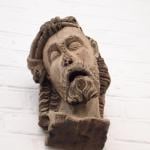BEFORE THERE WERE CARS. Toward the beginning of a section on the problems cars pose for cities, Jacobs quotes H.B. Cresswell, writing about the London of his youth (the 1890s): “The Strand of those days… was the throbbing heart of the people’s essential London. Hedged by a maze of continuous alleys and courts, the Strand was fronted by numbers of little restaurants whose windows vaunted exquisite feeding; taverns, dives, oyster and wine bars, ham and beef shops; and small shops marketing a lively variety of curious or workaday things all standing in rank, shoulder to shoulder, to fill the spaces between its many theatres…. But the mud! [A euphemism.–Jacobs] And the noise! And the smell! All these blemishes were [the] mark of [the] horse….
“The whole of London’s crowded wheeled traffic–which in parts of the City was at times dense beyond movement–was dependent on the horse: lorry, wagon, bus, hansom and ‘growler,’ and coaches and carriages and private vehicles of all kinds, were appendages to horses. Meredith refers to the ‘anticipatory stench of its cab-stands’ on railway approach to London: but the characteristic aroma–for the nose recognized London with gay excitement–was of stables, which were commonly of three or four storeys with inclined ways zigzagging up the faces of them; [their] middens kept the castiron filigree chandeliers, that glorified the reception rooms of upper and lower middle class homes throughout London, encrusted with dead flies and, in late summer, veiled with jiving clouds of them.
“A more assertive mark of the horse was the mud that, despite the activities of a numerous corps of red-jacketed boys who dodged among wheels and hooves with pan and brush in service to iron bins at the pavement-edge, either flooded the streets with churnings of ‘pea soup’ that at times collected in pools overbrimming the kerbs, and at others covred the road-surface as with axle grease or bran-laden dust to the distraction of the wayfarer. In the first case, the swift-moving hansom or gig would fling sheets of such soup–where not interecepted by trousers or skirts–completely across the pavement, so that the frontages of the Strand throughout its length had an eighteen-inch plinth of mud-parge thus imposed upon it. The pea-soup condition was met by wheeled ‘mud-carts’ each attended by two ladlers clothed as for Icelandic seas in thigh boots, oilskins collared to the chin, and sou’westers sealing in the back of the neck. Splash Ho! The foot passenger now gets the mud in his eye! The axle-grease condition was met by horse-mechanized brushes and travellers in the small hours found fire-hoses washing away residues….
“And after the mud the noise, which, again endowed by the horse, surged like a mighty heart-beat in the central districts of London’s life. It was a thing beyond all imaginings. The streets of workaday London were uniformly paved in ‘granite’ sets… and the hammering of a multitude of iron-shod hairy heels upon [them], the deafening, side-drum tatoo of tyred wheels jarring from teh apex of one set to the next like sticks dragging along a fence; the creaking and groaning and chirping and rattling of vehicles, light and heavy, thus maltreated; the jangling of chain harness and the clanging or jingling of every other conceivable thing else, augmented by the shrieking and bellowings called for from those of God’s creatures who desired to impart information or proffer a request vocally–raised a din that… is beyond conception. It was not any such paltry thing as noise. It was an immensity of sound…”
(Quoted in The Death and Life of Great American Cities, pages 341-2.)
[Eve again: The “mud” also had health consequences which you can easily imagine.]











